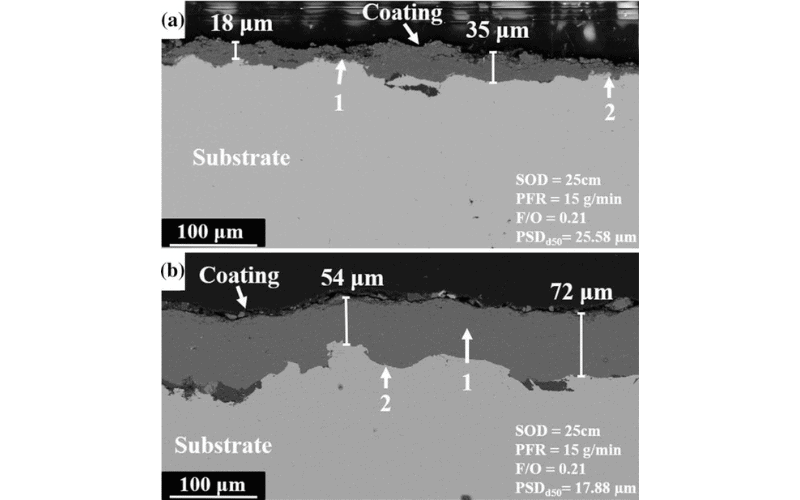July 24, 2019
Effect of HVOF Process Parameters on TiO2 Coatings: An Approach Using DoE and First-Order Process Maps
High-velocity oxy-fuel deposition stages of titanium oxide coatings were analyzed and reported here. For the first stages of deposition, process maps were used to evaluate the influence of deposition parameters such as stand-off distance (SOD), powder feed rate (PFR) and fuel/oxygen ratio (F/O) on velocity and temperature of in-flight particles. These parameters were then combined with particle size distribution (PSD) to further optimize the deposition process considering the spray trace width and the area covered by splats and non-molten particles as responses. Furthermore, the structural, morphological and mechanical characteristics either of single splats, clusters of semi- and/or non-molten particles or coatings were obtained by, x-ray diffraction, Raman spectroscopy, scanning electron microscopy and nanoindentation. During coating build-up, lower PFR and F/O induce more splat particles and fewer clusters of semi- and/or non-molten particles, whereas the PSD affects the width of the spray trace. The combination of F/O and SOD upper levels was related to a high percentage of TiO2 splat deposition. Finally, the proposed methodology allowed to obtain dense TiO2 coatings with a higher content of rutile phase and an average thickness of 65 µm.
Originally published at Journal of Thermal Spray Technology (Volume 28, pages 1160–1172, 2019)
By G. A. Clavijo-Mejía, D. G. Espinosa-Arbeláez, J. A. Hermann-Muñoz, A. L. Giraldo-Betancur & J. Muñoz-Saldaña
